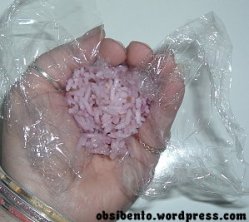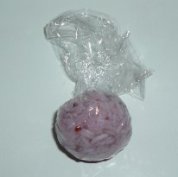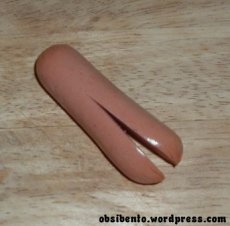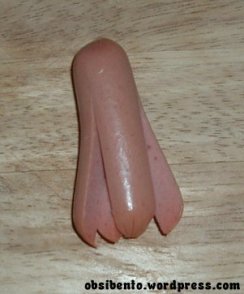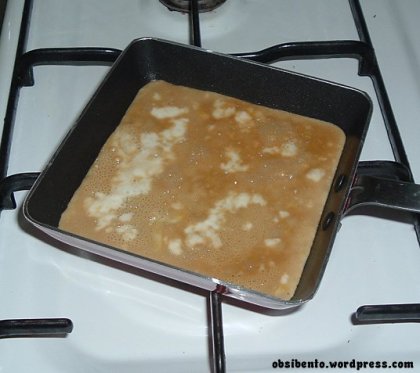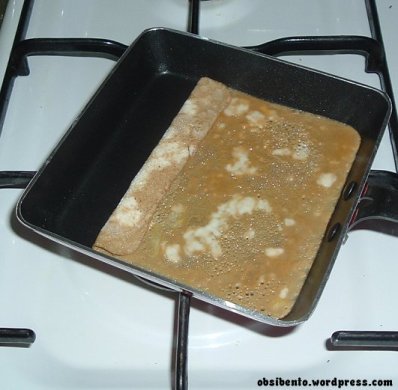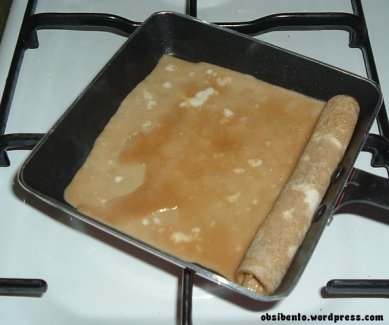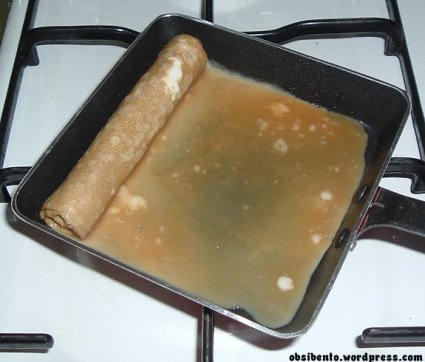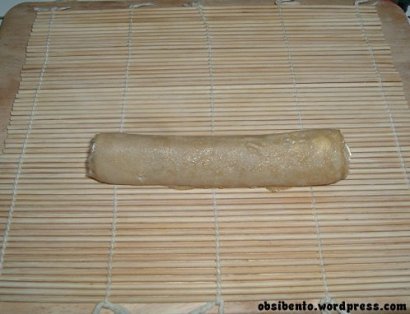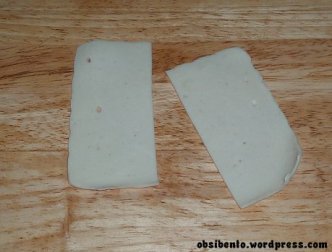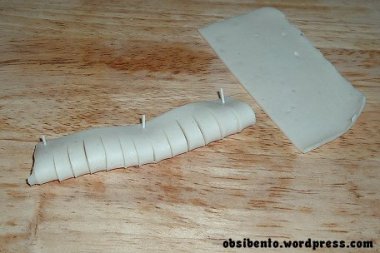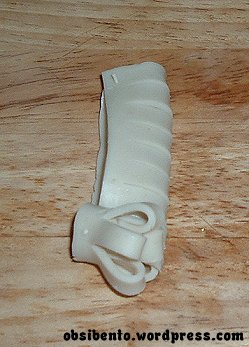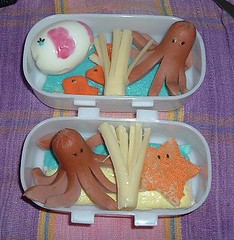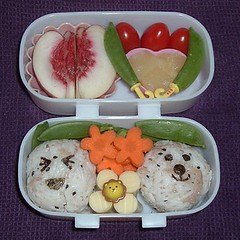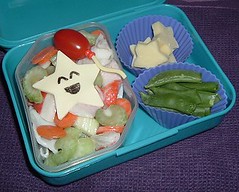Onigiri are balls of rice, sometimes with a filling inside, but they don’t have to. They are quite easy to make… here’s how 🙂
First take your rice. You are supposed to use a sticky rice, so it forms together into balls better. I generally only buy basmati rice (because it’s supposedly lower GI), and my rice balls will still form in a ball, but are best eaten whole or with a spoon, as they do fall apart. I add a little salt and sushi vinegar to my rice cooker to give it a bit of flavour, and I either sprinkle furikake on it, or include a container for MiniObsi to sprinkle her own on it at lunch.
I’m using purple rice here, which I made by adding a little grated purple carrot to the rice cooker. You can make orange rice using orange carrot, green by using mashed peas. You can make these while the rice is still a little warm, it seems to help them stay in shape better. I use a piece of plastic wrap in my hand to help me form the balls.
Take a spoon full of rice and put it in your hand (on the plastic wrap), cupping your hand, so you’re making a little bowl of rice in your hand (if that makes sense)
Then add a little bit of the filling to the centre. Here I’ve used a flavoured (ginger, chili & lime) tinned tuna mixed with a little mayonnaise
Add a little bit of rice to the top
Then cup your hand more to start forming the rice into a ball around the centre filling
Then sort of squeeze the rice into a ball, using the plastic wrap to help keep the rice together. You can twist the plastic wrap to help make the shape
To make sure the plastic wrap doesn’t pop, keep opening it up and letting the air out. You can keep the balls sealed up in the plastic wrap for a couple of days in the fridge so that you have a couple of days supply ready to go.



